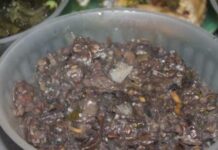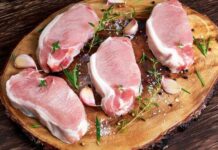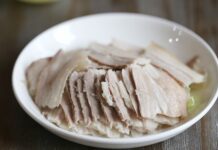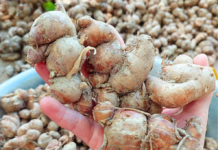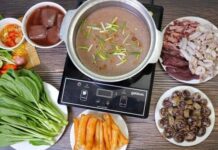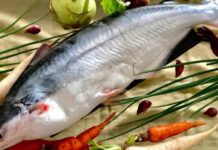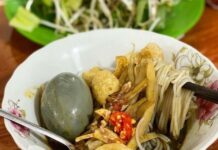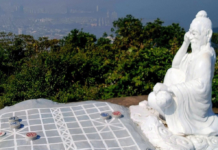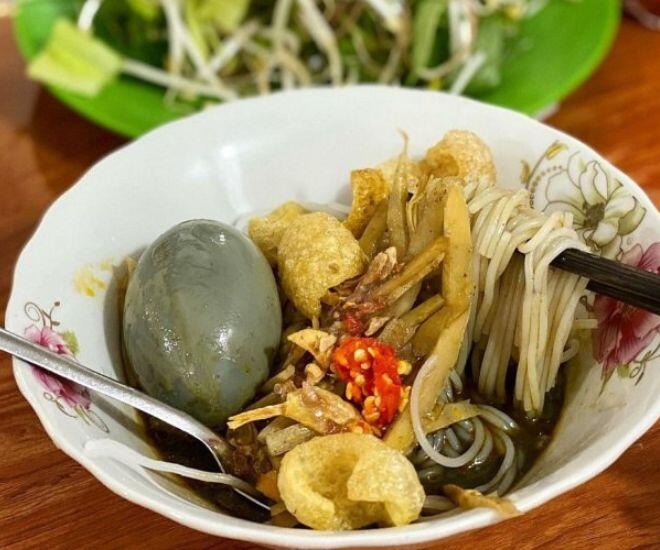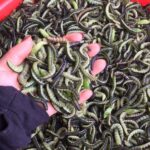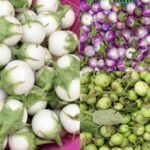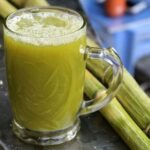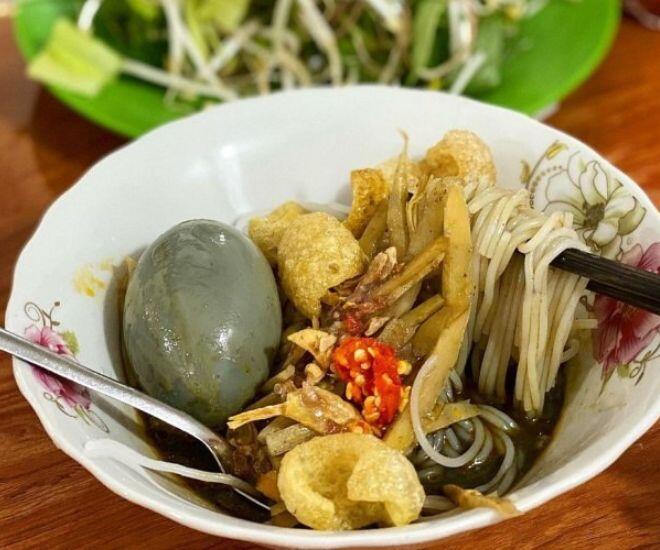
Bún Mắm Cua, a beloved dish among the locals, has its roots in Binh Dinh province, introduced to Gia Lai by migrants. They brought with them the essence of their homeland’s cuisine, blending it with local ingredients and cultural influences to create a unique delicacy. Initially, Bún Mắm Cua was a humble street food, sold by vendors and small eateries by the roadside. Over time, it has evolved beyond its modest origins to become a prominent feature of Pleiku’s culinary landscape.
The name, Bún Cua Thối, literally translates to “Stinky Crab Noodle Soup,” derived from its distinctive aroma. For the uninitiated, the scent of this dish can be off-putting, even alarming. However, it is this very aroma that makes it so memorable and sets it apart from other crab-based dishes like bún riêu cua. Upon entering a Bún Mắm Cua restaurant, you’ll be greeted by pots of dark, thick broth simmering away, emitting a cloud of steam and an unforgettable fragrance.
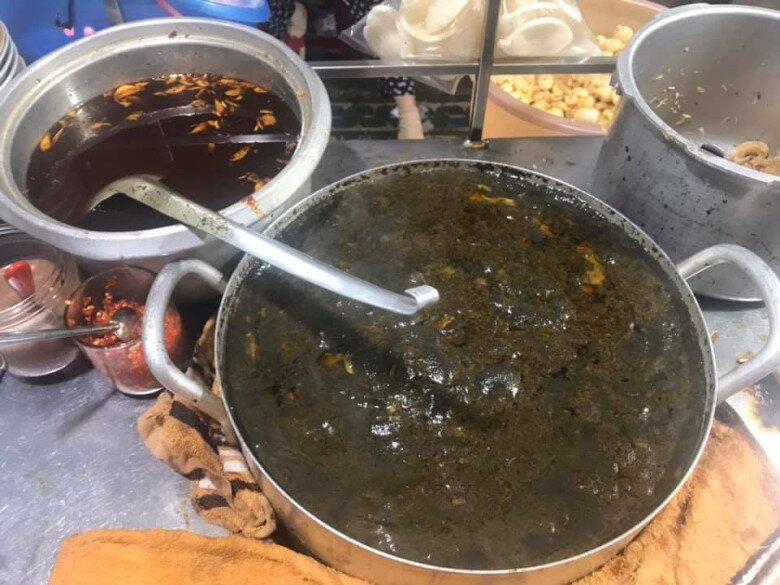
Preparing a bowl of authentic Bún Mắm Cua is a labor of love, requiring a meticulous and complex process. The star ingredient is freshwater crab, specifically those caught in the fields of Phu Tho, now known as Dong Xanh, in An Phu, Pleiku. According to local wisdom, crabs from this area yield the most flavorful and robust broth.
The preparation begins with cleaning and parboiling the crabs, a technique that renders them unconscious while keeping them fresh. The meat is then extracted, ground, and left to ferment for a day or two. Meanwhile, the crab juice is also fermented separately for a day until it turns black and emits a strong aroma. This fermentation process is critical to the dish’s success, as under-fermenting will result in a bland broth, while over-fermenting will make it too pungent. Thus, the chef’s experience and attention to detail are key to achieving the perfect balance.
Once the fermentation is complete, the crab juice is simmered over low heat. Thinly sliced pork belly is stir-fried and added to the broth, along with fresh bamboo shoots. The longer the bamboo shoots cook, the sweeter they become, enhancing the broth’s depth of flavor. A unique touch is the addition of boiled duck eggs, simmered in the crab broth and served as a side dish, offering a rich and creamy contrast.
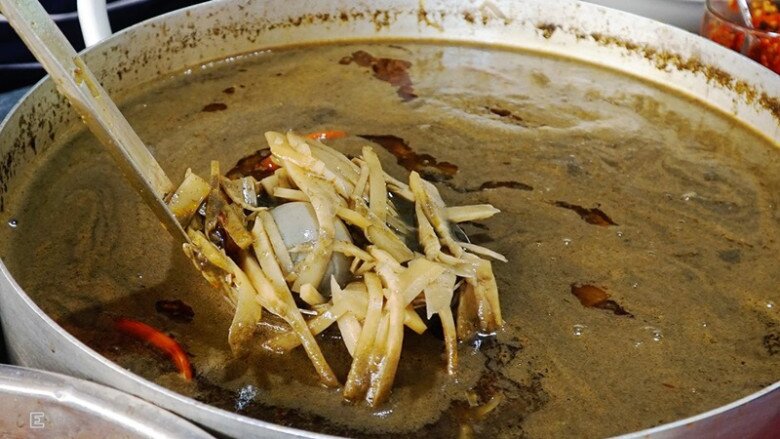
At first glance, a bowl of Bún Mắm Cua appears deceptively simple: a small portion of noodles, a few slices of bamboo shoots, and just enough broth to cover them, topped with fried shallots, pork cracklings, and crispy pork skin. However, it is the aroma that sparks the most debate. For some, the potent scent of fermented crab is a turnoff. Consequently, Bún Mắm Cua hasn’t gained the same widespread popularity as Gia Lai’s dry pho, appealing to a more selective audience. Yet, for those who can move past the initial odor, a world of complex flavors awaits—a harmonious blend of spicy, savory, and pungent notes unlike any other dish.
Traditionally, Bún Mắm Cua is served with a generous plate of fresh herbs, including lettuce, banana flowers, bean sprouts, basil, perilla, and mint. These herbs not only enhance the flavor but also help neutralize the crab’s strong aroma, making it more palatable. Many restaurants also offer additional sides such as shrimp crackers, fried pork rolls, and fermented pork sausage, allowing diners to customize their experience. A squeeze of fresh lime and a dash of chili pepper elevate the dish, adding a tangy and spicy kick to the herbs. For those who crave richness, the duck egg, infused with the essence of the crab broth, is a perfect complement.
Interestingly, Bún Mắm Cua is typically served in small bowls, with just enough broth to coat the noodles—a presentation that mirrors the serving style of Quang-style noodles. This understated approach reflects the chef’s respect for the dish’s intricate flavors and complex character.
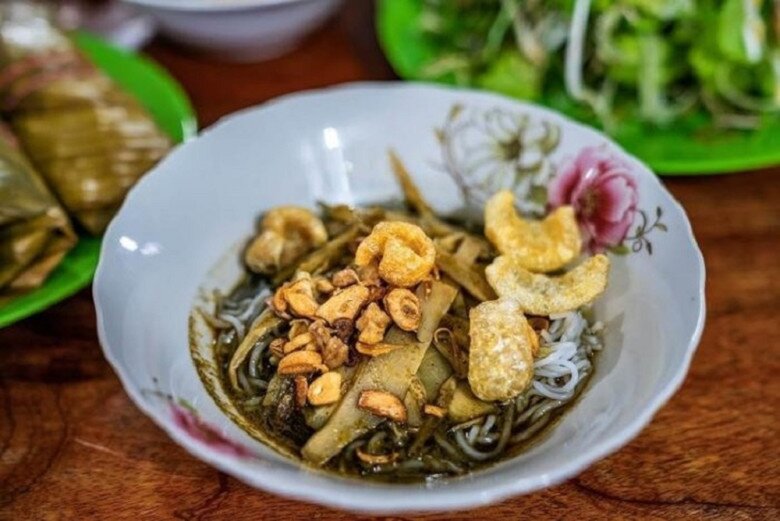
Locals believe that the ideal time to indulge in Bún Mắm Cua is during the rainy season, when the crabs are meatier and the fermented broth is at its most flavorful. On chilly, rainy days, there’s nothing quite like warming up with a bowl of spicy, steaming Bún Mắm Cua—it’s an integral part of the region’s culinary heritage. With its affordable price tag, ranging from 10,000 to 15,000 VND per bowl, this dish is accessible to people from all walks of life.
Bún Mắm Cua, with its unique character and demanding nature, is more than just a meal—it’s a testament to culinary creativity, cultural fusion, and perseverance. Despite its divisive nature, it has undeniably enriched Gia Lai’s culinary scene, challenging preconceived notions about food and offering a memorable experience to those brave enough to try it. When visiting this sunny and windy highland region, don’t shy away from sampling Bún Mắm Cua and immersing yourself in a truly authentic and captivating culinary tradition of the Gia Lai people.
Unveiling the Muse of the Tay Nguyen Highlands: A Trekker’s Paradise
Nestled within the majestic forests of Tay Nguyen, this ethereal waterfall has earned the title of “Muse of the Great Forest.” With its awe-inspiring grandeur, it stands as one of the most magnificent waterfalls in the region. Offering a moderate height, this hidden gem is a haven for adventurers seeking to traverse the lush forests and uncover the untouched, enigmatic beauty that lies within.
“The Ultimate Guide to Making Delicious Seafood Spring Rolls at Home: Your Go-To Recipe”
“Discover the ultimate seafood nem recipe, a delicious treat that you can easily prepare at home. This mouth-watering delicacy is a favorite among food enthusiasts and will surely impress your family and friends. With simple, easy-to-follow instructions, you’ll be able to master this dish and make it your go-to option for any occasion.”
3 Bad Habits That Turn Eggplants From Superfood to Super-toxic: Uncover the Right Way to Enjoy This Delicious Veggie
“Cà pháo, a versatile vegetable that stars in countless culinary delights, especially the iconic cà pháo muối, a staple in traditional Vietnamese meals. However, unbeknownst to many, improper consumption of this vegetable can lead to potential health hazards. Discover the hidden dangers lurking beneath the enticing flavors of cà pháo and learn how to navigate its consumption safely.”











